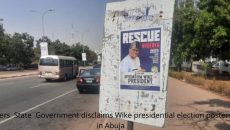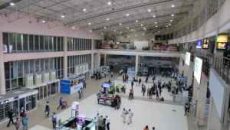In the face of dwindling federal allocation and increasing infrastructure deficit, the federal capital administration formulated the land swap policy to leverage on private funding to develop the capital city
When Bala Mohammed assumed office as Federal Capital Territory, FCT, Minister in April 6, 2010, what he met on ground was daunting. “I was confronted by several cogs in the wheel of governance which included chaotic and corrupt land administration, abuse of mass housing programme, endemic traffic congestion, failing environmental orderliness, threatening security situation, poor and inadequate transportation services, inaccessible and poor education standard, overstretched and inadequate health facilities, poor revenue collection as well as leakages, overlapping and duplication of departmental responsibilities.”
To overcome these challenges, he formulated a new vision and mission statement to drive President Goodluck Jonathan’s Transformation Agenda in Abuja, the centre of unity. Mohammed’s vision is making Abuja “one of the world’s best 20 capital cities by 2020.” His basic target is to build and administer “a first-class FCT with effective service delivery comparable to the best in the World…in strict compliance with the master plan.” He formulated a road map for sustainable development for the territory. The bottom line is funding. And with the reduced decline in allocation, the Mohammed administration decided to take a drastic step aimed at surmounting the problem.
The Infrastructure Challenge
Building the Abuja of his dream has multiple challenges. Due to a combination of factors the FCT has become the fastest growing city in Africa with the consequent population explosion and serious pressure on infrastructure. There is a rapid growing middle class with increasing sophistication, acute housing deficit and rising cost of rent in the city. This gap left room for land speculation. In addition, problems of resettlement and compensation for the phase one projects were still largely unresolved in the face of inadequate infrastructure funding.
The aggregate infrastructure development in FCT since its inception over 35 years ago is put at about 25 per cent. According to authorities, over 90 per cent of allocated plots in Abuja are not developed by the beneficiaries because the basic infrastructure has not been provided. Districts like Durumi, Mabushi, Kado and Kaura are without infrastructure.
Government tried the mass housing initiative to bridge the gap in housing deficit but in practice, it failed to provide the primary infrastructure. For instance, the Malaysian Garden project in Saraji District was a mass housing development for 10,000 housing units on 510 hectares. The project period is 10 years. The memorandum of understanding was signed in June 2004 and today, the progress made has been put at only an estimated two per cent. Similarly, the failure of the American Hospital project is seen by the FCT administration as “a bitter experience in infrastructure initiative.” The bottom line is funding. And with the gradual decline in allocation, the Mohammed administration decided to take a drastic step aimed at surmounting the problem.
The land swap initiative
The land swap initiative is simply defined by the FCT Minister as “land for development.” How does it work? The FCT Administration grants a given size of land in a green field district to a developer who provides the primary infrastructure according to strict guidelines without any financial, technical or demand risk on the part of FCTA. The district is then split between government and the developer according to agreed percentage, 40/60. The developer is allowed to recoup his/her investment in infrastructure by selling his own share to subscribers at market driven rates while government allocates its own plot to the public to meet its social responsibilities. It is a mutually beneficial partnership.
It means that government is leveraging on private sector finance and expertise to fund infrastructure in a business agreement that is mutually beneficial. This frees public funds for development of critical sectors. It equally discourages land speculation and land freezing.
The land swap initiative by the FCT is a vehicle to achieve President Jonathan’s Transformation Agenda in Abuja. It will provide at least 10 new districts by 2015. It will open up new districts by providing access to new districts. Currently, government has overshot this initial target by over 50 per cent as 15 investors are developing 16 districts with many on the waiting list.
Basically, under the land swap model, the developers must provide nine primary infrastructure. They have to provide: the detailed district design and the bill of engineering; agreed kilometres of roads of varying specified sizes within the districts; agreed kilometres of storm water drains; agreed kilometres of foul water drains; agreed kilometres of water distribution lines; agreed kilometres of streetlighting lines; agreed kilometres of telecommunications duct; and agreed number of mini-sewage treatment plants.
Furthermore, the developer is required to deliver a business plan that shows its technical capacity, financial capability and managerial competence.
Follow Us on Social Media




 WhatsApp us
WhatsApp us